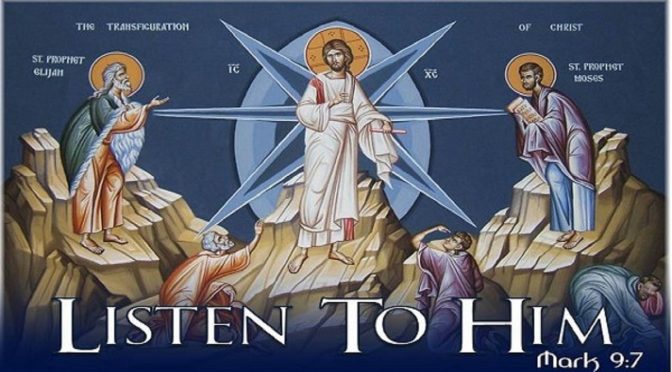Contents
Introduction
This Sunday is the 18th Sunday (A) of the Church’s liturgical calendar. Since August 6, 2023, which happens to be the feast of the Transfiguration of Jesus, occurs on a Sunday, the feast with its readings, replaces the readings of the 18th Sunday (A). The parallel texts to Matthew 17:1–9 are Mark 9:2–8 and Luke 9:28–36. Among the three evangelists, only Luke underlines that Jesus went up the mountain with his three disciples to pray. And as he was praying, Luke says his countenance changed. That is, he was transfigured. This is not surprising because Luke gives much importance to prayer. He conceives prayer as intimacy with God. Before taking any initiative, Jesus always consults his Father in and through prayer to be enlightened and instructed on the best way to act. The transfiguration of Jesus is a detailed explanation of the experience narrated by Daniel (cf. First Reading).
Moses and Elijah
Immediately after Jesus metamorphosed, Moses and Elijah appeared on the scene. But why these two? The most likely explanation is that Moses the lawgiver appears as the representative of the old covenant and the promise of salvation, which was to be fulfilled in the passion, death, and resurrection of Jesus. On the other hand, Elijah appears as the prophet of the eschaton—the end times (cf. Mal 4:5–6; Mark 9:11–13). According to Matthew’s account, which differs from Mark and Luke, the metamorphosed Jesus represents the new Moses, who meets God on the new Sinai, in the cloud (Matt 17:5. Cf. Exod 24:15–18), with a luminous face (Matt 17:2. Cf. Exod 34:29–35; 2Cor 3:7–4:6), assisted by the two important personalities of the Hebrew (Old) Testament, who had already benefitted from the divine revelation on the Sinai (cf. Exod 19; 33–34; 1kgs 19:9–13), and represent the law and prophets, which Jesus has come to fulfil (cf. Matt 5:17). Luke goes further and explains that both Moses and Elijah discussed the death of Jesus (cf. Luke 9:31), but failed to give the content or detail of such a discussion. We understand.…
Conclusion
Jesus has taken office from Moses and Elijah. He is now in-charge of every law, prophets and prophecy, and even of every life. Definitely, he did and he is still doing all things well. He is not like many politicians and religious leaders, who buy their way to the offices just to work only for their selfish interests. In Jesus’ tenure, there was no iota of corruption. Do not ask me about many of our politicians and religious leaders. Because I am sure you know them better than I do. As indicated above, Luke underlines that Jesus went to the mountain to pray. And that his transformation took place while he was praying. Do not forget the importance of prayer in your life. But remember, God answers only the prayer of a just person. Do not pray when you should work, and do not work when you should pray. The principles of time and season for everything (cf. Eccl 3:1) should be respected.
FOR DETAILS, GET YOUR OWN COPIES OF THE BOOK “THE WORD OF LIFE:
SUNDAY REFLECTIONS” (vols. I‑II-III)! The reflection for the Transfiguration of Jesus (A) is found in The Word of Life, vol. I, pages 150–163. Happy reading!
For details on how to get it, contact the author on this link: https://m.me/uchennabiblia?fbclid=IwAR2yeg4a6sDGBp9QGkIvKj6FSADumMokN6lshdE0zuo-JHs6qOmlhA7jyHo
or email me at: postmaster@uchennabiblia.com
or simply send an SMS on 08116100926, and I will get back to you.

